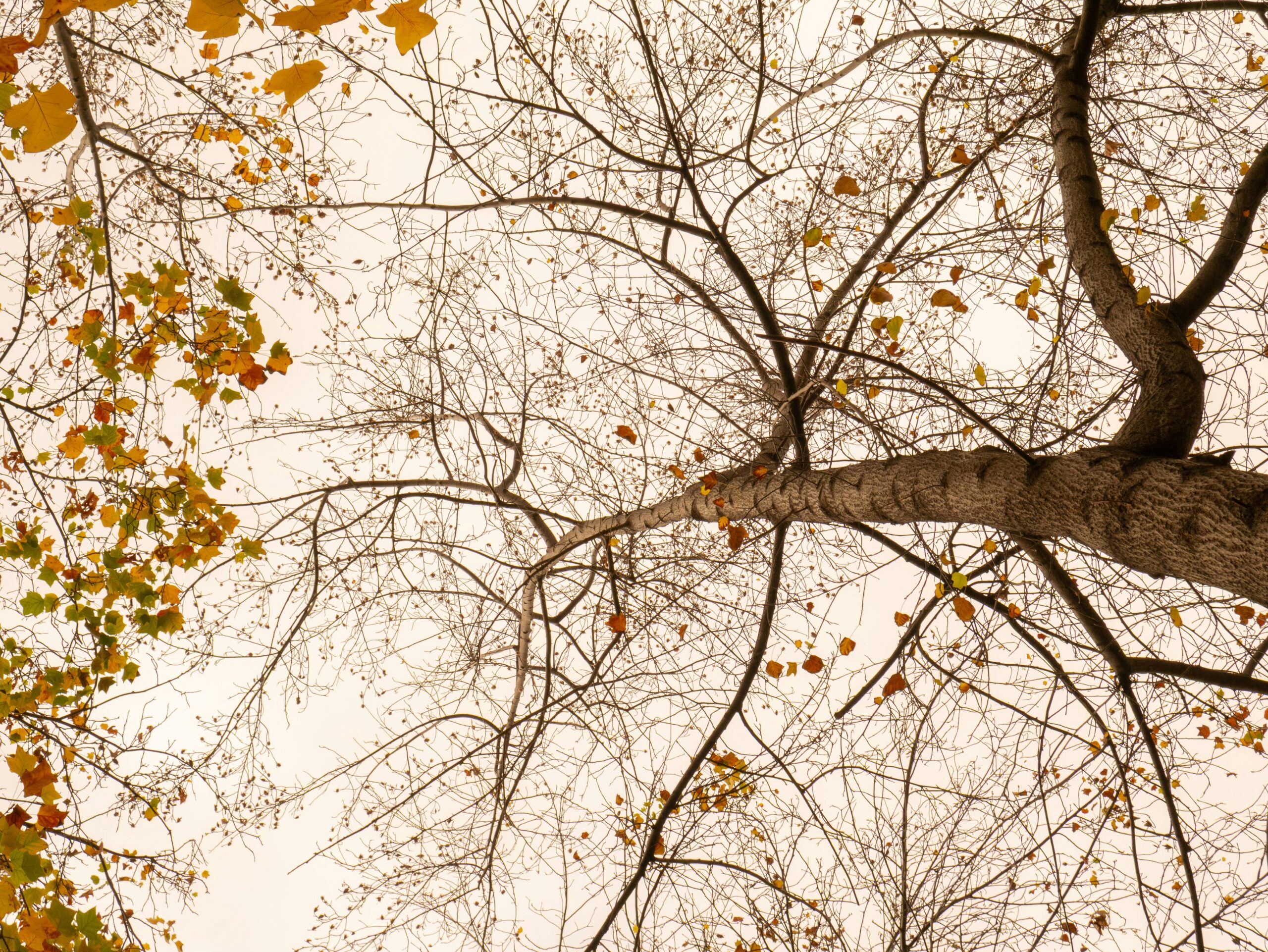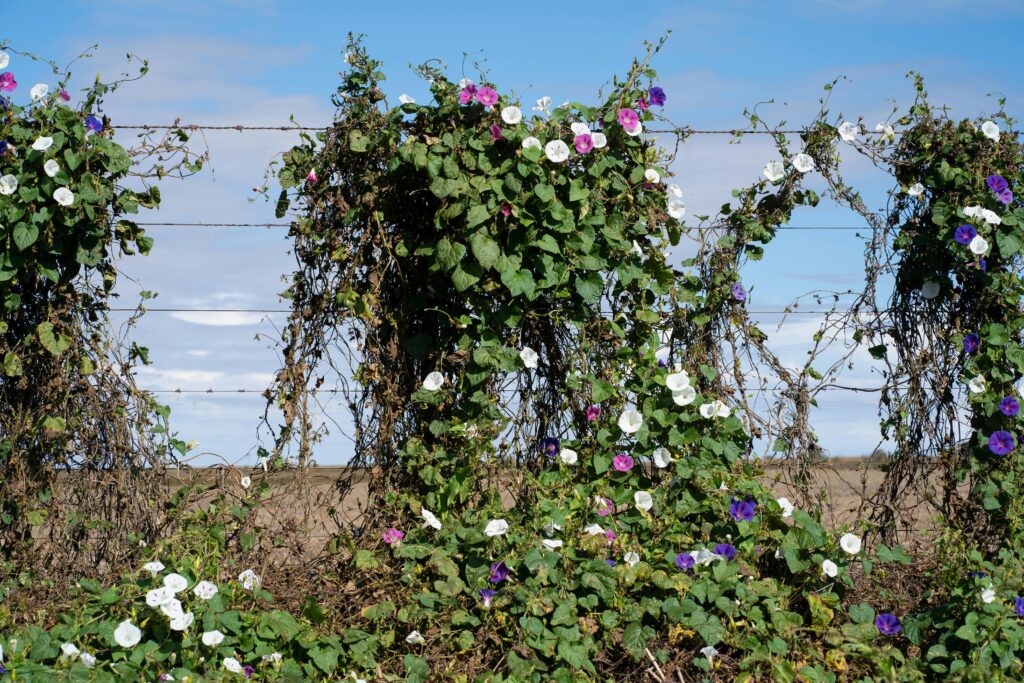
Imagine stepping into your backyard on a crisp autumn morning. The leaves are turning vivid shades of orange and red, but beneath the beauty lies a challenge: preparing your landscape for the transition ahead. Perhaps last fall you neglected a thorough cleanup, and now your garden looks cluttered, with fallen leaves smothering tender plants and debris hiding potential pests. Or maybe last spring you didn’t get around to removing winter’s leftovers, and your flowerbeds are struggling to bloom fully. If this sounds familiar, you’re not alone. Many homeowners underestimate the impact of seasonal cleanup on the health and vibrancy of their landscape.
In this blog, we’re going to dive deep into the essential steps of spring and fall cleanup, and explain why these seasonal rituals are crucial for maintaining a thriving landscape year-round. Whether you’re a gardening novice or a seasoned green thumb, understanding how to prepare your landscape for changing seasons can make all the difference in the health, appearance, and value of your outdoor space.
When we talk about landscape preparation during spring and fall, what exactly do we mean? This involves clearing away debris like dead leaves, branches, and spent plants, pruning overgrown shrubs, aerating soil, and sometimes adding mulch or fertilizer. Each of these tasks plays a vital role in ensuring your landscape not only survives, but flourishes, as the seasons shift.
Throughout this article, you will learn practical, step-by-step strategies for effective spring and fall cleanup to restore balance and vitality to your landscape. From identifying what to remove and what to keep, to best practices for soil care and plant protection, we’ll cover it all. Additionally, we’ll explore tips to protect your landscape from common seasonal stressors, such as frost damage in fall or drought in spring, so your outdoor environment remains resilient and beautiful.
Ultimately, preparing your landscape for the changing seasons is more than a chore, it’s an investment in your home’s environment and your personal enjoyment. With the right knowledge and a bit of effort, you can transform your outdoor space into a stunning and healthy retreat all year long. So let’s get started on mastering the art of landscape cleanup this spring and fall!
Why Landscape Preparation is Crucial for Spring and Fall Cleanup
When we talk about landscape, we’re referring to the outdoor spaces around your home or business, your garden, lawn, trees, shrubs, flower beds, and hardscape features like walkways or patios. Preparing your landscape for the changing seasons through dedicated spring and fall cleanup is more than just an aesthetic choice; it’s a vital step to maintaining the health, value, and longevity of your outdoor environment.
Why does landscape preparation matter so much during spring and fall? The answer lies in the natural rhythms of the seasons and how they stress your plants and soil. During fall, your landscape enters a period of dormancy, where trees shed their leaves, and many plants slow their growth. Conversely, spring signals reawakening, new shoots emerge, and soil hydration levels shift after winter’s freeze.
According to a survey by the National Association of Landscape Professionals, nearly 70% of homeowners recognize that proper seasonal cleanup directly results in healthier plants and reduces costly repairs in the long run. Neglecting this essential upkeep can lead to issues like pest infestations, soil erosion, and disease spread among your plants.
Take for example the story of the Johnson family from Oregon. Each fall, they diligently rake away fallen leaves, prune dead branches, and apply mulch to their flower beds. That spring, their garden bursts to life earlier than most neighbors’, with vibrant blooms and lush green grass. Thanks to their proactive landscape maintenance, they’ve avoided common problems like root rot and winter burn, saving thousands in landscaping costs over the years.
By understanding what landscape preparation involves and why it matters, you can ensure your outdoor space not only survives but thrives through the changing seasons. This sets the stage for deeper insights into the best spring and fall cleanup practices tailored to your unique landscape.
How to Apply Landscape Cleanup Step by Step for Spring and Fall
Preparing your landscape for the changing seasons is a crucial way to ensure your outdoor space stays healthy, vibrant, and ready to thrive. Whether you’re embracing the fresh blooms of spring or the crisp decline of fall, the right landscape cleanup steps can make all the difference. Here’s a detailed, step-by-step guide on how to apply landscape cleanup effectively during these transitional seasons.
Step 1: Assess Your Landscape Thoroughly
– Walk around your yard and take note of problem areas such as dead plants, overgrown shrubs, and debris.
– Identify seasonal needs, for spring, look for winter damage; for fall, prepare for frost and leaf accumulation.
– Make a list of tasks based on your observations to organize your cleanup efficiently.
Step 2: Remove Debris and Dead Plant Material
– Use gardening gloves and tools to clear away fallen leaves, twigs, and dead branches.
– Cut back dead or damaged perennials and prune shrubs that will benefit from shape correction.
– This step helps prevent pests and diseases that might hide in decaying plant matter.
Example: In fall, raking away leaves from flower beds is essential to avoid fungal buildup during winter.
Step 3: Prune and Trim Trees and Shrubs
– Use sharp, clean tools to trim overgrown branches.
– Focus on removing deadwood and crossing branches to improve structure and light penetration.
– Prune spring-flowering shrubs right after they bloom, while summer or fall bloomers are best pruned in late winter or early spring.
Step 4: Soil Preparation and Mulching
– Loosen the soil around plants with a garden fork or tiller to improve aeration.
– Add compost or organic matter to enrich soil nutrients.
– Apply a new layer of mulch to help retain moisture, regulate soil temperature, and suppress weeds.
Tip: Adding mulch in fall can protect plant roots from freezing temperatures.
Step 5: Lawn Cleanup and Edging
– Rake the lawn thoroughly to remove debris and thatch buildup.
– Consider aeration if your lawn gets heavy use or looks compacted.
– Edge the lawn carefully to maintain crisp borders, this gives your landscape a clean, finished look.
Step 6: Plan and Plant Seasonal Annuals or Bulbs
– In the fall, plant spring-blooming bulbs like tulips and daffodils.
– In spring, consider adding colorful annuals that will thrive through the summer.
– This helps keep your landscape vibrant year-round and introduces fresh interest.
Step 7: Inspect and Maintain Irrigation Systems
– Check sprinklers and drip lines for clogs or leaks.
– Adjust watering schedules to match the season, less in fall, more in spring.
– A well-maintained irrigation system supports plant health and water conservation.
Visual Aid: Seasonal Landscape Cleanup Checklist
| Step | Spring Action | Fall Action |
| Assessment | Check winter damage & early growth | Identify leaf accumulation & frost risk |
| Debris Removal | Clear winter debris & dead foliage | Rake fallen leaves & remove dead plants |
| Pruning & Trimming | Prune spring bloomers after flowering | Remove dead branches and prepare shrubs |
| Soil & Mulch Preparation | Add compost & fresh mulch | Mulch to protect roots over winter |
| Lawn Care | Rake, aerate, and edge | Final leaf cleanup & prepare lawn for dormancy |
| Planting | Plant summer annuals | Plant bulbs for spring blooms |
| Irrigation Maintenance | Inspect and adjust watering | Winterize irrigation system if needed |
Real-Life Example: Transforming a Neglected Yard
Last spring, a local homeowner noticed their landscape looked lackluster after a harsh winter. By following this step-by-step landscape cleanup method, they started with a thorough assessment, cleared out dead branches, amended the soil with rich compost, and planted vibrant annuals. Within weeks, their yard went from dull to dazzling, with healthy blooms and green grass welcoming the new season.
Applying these steps for both spring and fall cleanup ensures your landscape adjusts gracefully to the shifting seasons, enhances curb appeal, and creates a welcoming outdoor space all year long.
By following this detailed process, you’ll be able to master landscape cleanup with confidence, making your yard the envy of your neighborhood no matter the season.
Tips for a Successful Spring and Fall Landscape Cleanup 🌿🍂
✅ Start Early: Begin your cleanup as soon as the snow melts in spring or leaves start falling in autumn to stay ahead of seasonal challenges.
✅ Remove Debris: Clear fallen leaves, branches, and dead plants to prevent mold and pests that can harm your landscape.
✅ Prune Thoughtfully: Trim dead or damaged branches to promote healthy growth, but avoid heavy pruning in fall to protect plants from cold stress.
✅ Mulch Smartly: Apply a fresh layer of mulch to regulate soil temperature and retain moisture through seasonal changes.
✅ Lawn Care Focus: Rake leaves regularly and aerate your lawn to enhance nutrient absorption and root health.
✅ Plant Adjustments: Replace or add plants suited for the upcoming season’s climate to keep your garden vibrant year-round.
✅ Soil Testing: Conduct a soil test before fertilizing to tailor nutrient applications for optimal landscape health.
✅ Protect Sensitive Plants: Use burlap wraps or covers on delicate shrubs and young trees to shield them from harsh winter conditions.
💡 Extra Tip: Clean your garden tools after each use to prevent disease spread and ensure they are ready for the next cleanup session.

Key Concepts
When discussing landscape in the context of spring and fall cleanup, we delve into much more than just a collection of plants or decorative elements arranged neatly on a property. The concept of a landscape embodies a living, breathing canvas that interacts dynamically with the changing seasons, shaping not only its appearance but also its ecological and aesthetic identity throughout the year.
The Landscape as a Seasonal Story
Imagine the landscape as a grand storyteller, narrating tales of renewal and rest with each passage of the seasons. Spring whispers of awakening, a vibrant dawn after the quiet dormancy of winter, while fall hums a reflective melody, a curtain call before the slumber of colder months. This cyclical narrative highlights how the landscape transitions, preparing itself to either burst into life or gently retreat, a process crucial to sustaining its health and beauty.
The Living Fabric of Soil and Plants
At the heart of every landscape lies the soil, a complex, living fabric that supports and nourishes all above it. During spring cleanup, this soil is akin to fertile ground awakening from a winter’s sleep, eager to embrace fresh growth. Fall cleanup, conversely, prepares the soil to rest and regenerate, like a patient artist preserving the integrity of their canvas in preparation for a new masterpiece.
Plants in the landscape respond rhythmically to these seasonal shifts. Perennials, trees, shrubs, and grasses form an integrated community deeply attuned to changes in temperature, daylight, and moisture. Their life cycles, budding, flowering, shedding leaves, act as natural indicators, guiding the timing and methods of cleanup to respect their biological needs.
The Landscape’s Role as an Ecosystem
Beyond aesthetics, the landscape functions as an ecosystem teeming with interactions. It hosts beneficial insects, birds, microorganisms, and fungi, all intricately linked within this web of life. Spring and fall cleanups are pivotal moments to understand the landscape’s ecological balance. Disturbing this balance carelessly can ripple through the entire system, affecting everything from soil health to pollination.
Envision the landscape as a complex orchestra: every species and element plays its part, and seasonal cleanup is akin to tuning and resetting the instruments, ensuring harmony isn’t lost but enhanced in the cycles to come.
Seasonal Preparation as Renewal and Preservation
The dual nature of landscape cleanup across spring and fall can be seen as both an act of renewal and preservation. Spring cleanup breathes energy and possibility into the landscape. It removes the debris of winter’s past, twigs, fallen leaves, and remnants, that may harbor pests or diseases, essentially clearing the stage for new growth to take the spotlight.
In contrast, fall cleanup is a measured, almost reverent preparation for hibernation. It involves tasks that protect the landscape’s health during harsh conditions ahead, such as removing dead or dying material to prevent decay from affecting living plants. This process safeguards the future vitality of the landscape, much like a caretaker insulating and shielding a fragile treasure through the quiet months.
The Importance of Timing in Landscape Cleanup
Timing within spring and fall cleanup is crucial, as it aligns the human intervention with the natural rhythms of the landscape. Acting too early or too late risks disrupting growth cycles or exposing plants to unnecessary stress. The landscape, much like a seasoned dancer, follows a choreography dictated by temperature and light changes; understanding this choreography is essential for any successful cleanup effort.
Aesthetic and Functional Duality
The concept of landscape embodies a balanced duality between aesthetics and functionality. While its visual appeal is often the most immediate aspect observed, the functional health of the landscape underpins that beauty. Cleanup in spring and fall must therefore consider both the visible and invisible layers, beauty springs forth from a foundation of good health.
To illustrate, consider a well-tended garden as a finely woven tapestry: each stroke of care, each cleanup action, reinforces both the vibrancy of color (aesthetic) and the durability of fabric (functionality).
Bringing these key concepts together provides a comprehensive understanding of the landscape’s intricate nature in the context of seasonal cleanup. It reveals why such care cannot be viewed as a mere task but rather as a thoughtful collaboration with nature’s cycles, honoring the landscape as a living story, a balanced ecosystem, and a delicate yet resilient art form.
Frequently Asked Questions (FAQs) About Landscape: Spring and Fall Cleanup Preparing Your Landscape for Changing Seasons
❓ Why is seasonal cleanup important for my landscape?
Seasonal cleanup helps remove debris, dead plants, and leaves that accumulate during winter or summer. This prepares your landscape for healthy growth, improves its appearance, and reduces the risk of pests and diseases in the changing seasons.
❓ What are the key tasks involved in a spring landscape cleanup?
Spring cleanup typically includes removing winter debris, pruning dead or damaged branches, refreshing mulch, fertilizing plants, and preparing planting beds for new growth. This sets the stage for vibrant, thriving plants as the temperatures rise.
❓ How does fall cleanup differ from spring cleanup in landscape maintenance?
Fall cleanup focuses on clearing fallen leaves, cutting back perennials, aerating the soil, and protecting plants for winter. Unlike spring cleanup, it emphasizes preparing the landscape to withstand colder temperatures and preventing damage from frost or snow.
❓ Can I do seasonal landscape cleanup myself or should I hire a professional?
Many homeowners can handle basic cleanup tasks like raking leaves and pruning shrubs. However, for extensive pruning, soil treatment, or large debris removal, hiring a professional landscaper ensures the job is done efficiently and safely.
❓ When is the best time to perform spring and fall landscape cleanups?
Spring cleanup is best done once the threat of frost has passed and the soil begins to warm, usually early to mid-spring. Fall cleanup should occur after most leaves have fallen but before the first hard freeze, typically late fall. Timing depends on your local climate and plant types.
